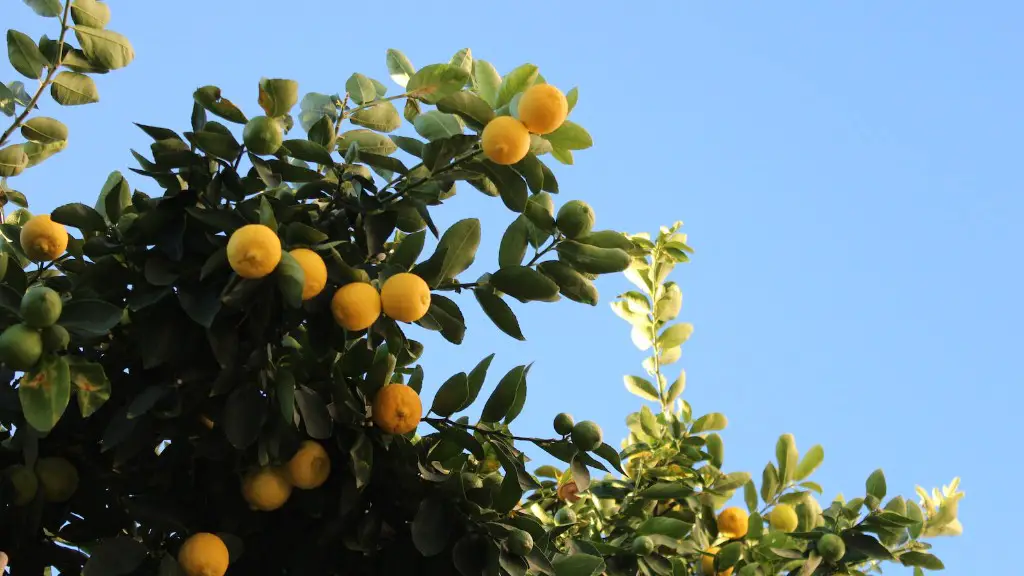Growing a lemon tree involves, in the very least, selecting suitable varieties, properly fertilizing the soil, and ensuring adequate and consistent water. You must also decide how many lemon tree seeds to plant. Planting the right amount of seeds is important in keeping your tree healthy and full of lemons.
Before planting, it’s important to remember that the majority of lemon trees grown from seed won’t bear fruit. Additionally, those that do typically take 3-4 years to bring their first crop. This means that, when planting, you should include at least three seeds in each pot. Plant the seeds about 1/4 inch deep and cover with a thin layer of soil. Water regularly and keep the soil moist for at least the first month.
When deciding how many seeds to plant, keep in mind that not all seeds will germinate. Some may never sprout, others may not do well. If you plant three seeds, you will increase your chances of at least one sprouting. You should also consider that if you plant multiple seeds, you’ll need to thin your lemon tree. This is the process of removing weaker seedlings in early growth, to encourage the healthiest trees to continue growing and produce fruit.
When thinning, look for the most robust seedling to keep. If multiple seedlings are of equal height and health, choose the one closest to the center of the pot. This will help encourage even growth. Also keep in mind that spacing your seedlings should be between one and two feet. If you’ve planted multiple seeds, thinning and spacing should be done within the first few months of germination.
Ultimately, to decide how many seeds to plant in a lemon tree, think about the space you have and the number of lemon trees you’d like to produce. If you only have room for one tree but would like to increase your chances of success, go with three seeds and thin accordingly. However, if you have room for multiple trees, you could start with several of each variety, and thin as needed. Planting more than three seeds may result in too many plants, so be sure to monitor your progress and thin as necessary for each pot.That way, you can ensure that the healthiest trees get their chance to thrive.
Soil Quality
Having the right soil quality is paramount in successfully growing a lemon tree from seed. The soil should be well aerated and drain well, allowing the roots of the plant to receive the right amount of nutrients and water. Fertilizing the soil can also help, as citrus trees require plenty of nitrogen, phosphorus, and other nutrients. Additionally, consider using a soil that is slightly acidic to give seeds a good start. Knowing the type of soil and nutrients needed to grow a healthy lemon tree can help you make the right decisions while planting.
Timing of Planting
When it comes to planting your lemon tree seeds, timing is essential. It’s best to check your local planting requirements beforehand. This can vary regionally, as well as on individual climate and weather conditions. In general, spring or late winter is the best time for planting, since the soil will warm up faster. Additionally, if you have a longer growing season, you may have better luck mixing fertilizer or compost with the soil before planting.
Varieties of Lemon
It’s important to select the right variety of lemon for your space and climate. While some are better suited indoors and others stay strong during different weather conditions, there are many varieties available to choose from. Consider which type of lemon suits your preferences best. Also, be sure to purchase your lemon tree seed from a reputable seller, as this will reduce the risk of disease and pests. Achieving the best results begins with getting the right types of lemon.
Drought and Frost Protection
In places with longer dry spells and cold winters, you must take steps to protect the tree. Organic mulches can help keep the soil damp and the roots cool. For the winter season, consider planting evergreen trees around the lemon tree that can protect it from frost and wind. Furthermore, try to ensure your tree isn’t exposed to extremely cold temperatures, as this can injure young trees and prevent them from producing ample fruit. Early preparation and understanding your local climate can maximize your yield when growing a lemon tree.
Pruning and Harvesting
Once you have planted your lemon tree seeds and cared for them, pruning and harvesting become a priority. Pruning helps shape the tree and maintain its size, as well as enhance the rate of fruiting. Ensure that you prune your tree properly to maintain its health. Additionally, when harvesting, never pick all the fruit off your tree. Leaving a few lemons on the tree allows the tree to recuperate and continue growing. Furthermore, harvesting at the right time is important, as under ripe fruit can contain more acidic content than ripe fruit.
Disease Control
Lemon trees are susceptible to disease and pests, especially if kept in a warmer climate. This means that once planted, you should take steps to ensure your tree remains healthy and undamaged. Keep an eye out for signs of disease or pest infestation, and take steps to treat them in a timely manner. Trimming affected parts and using organic pesticide can be effective in controlling disease. Ultimately, the best way to prevent pest and disease damage is to keep your lemon tree healthy, which involves proper fertilization, watering, and pruning.


